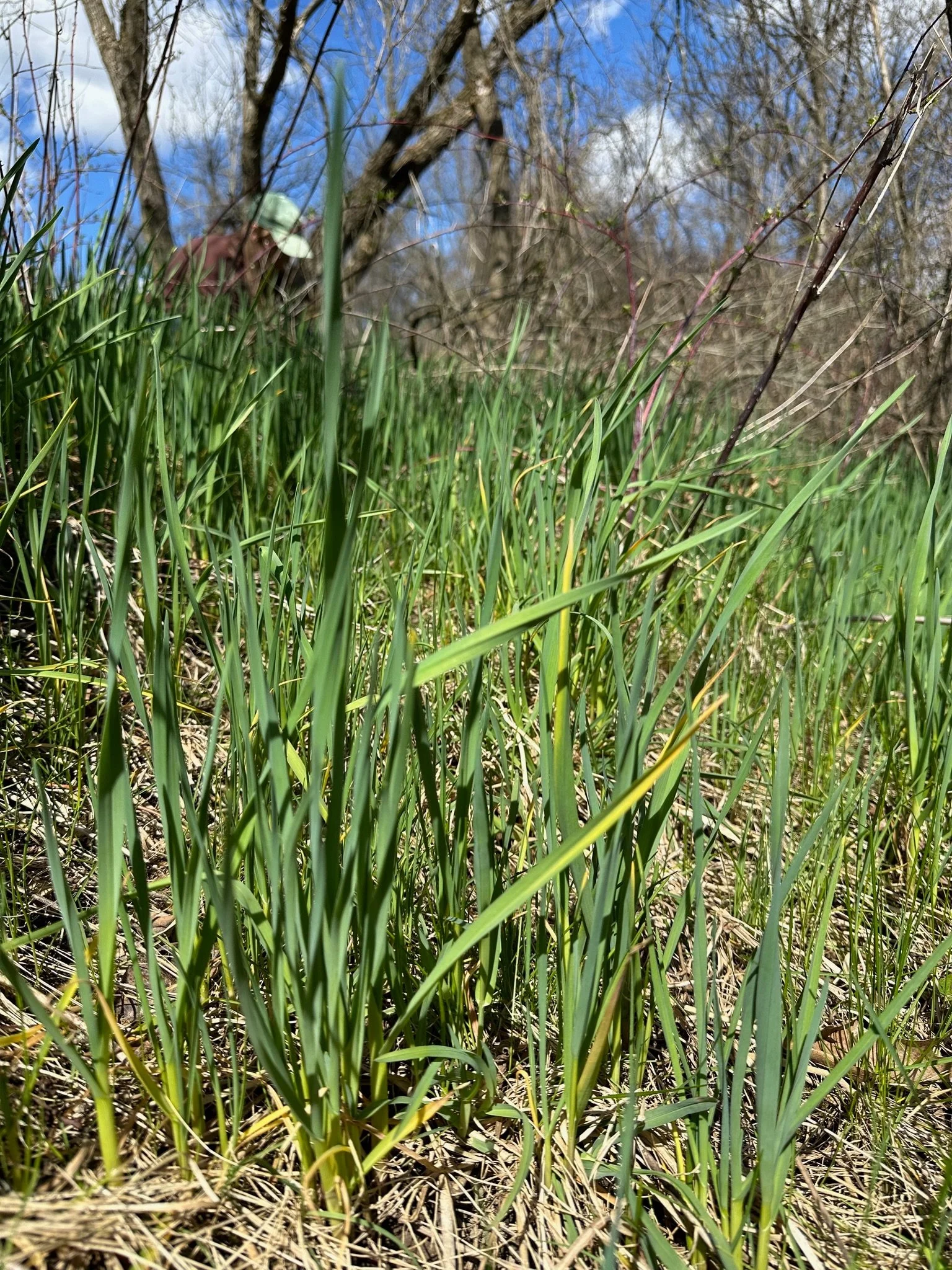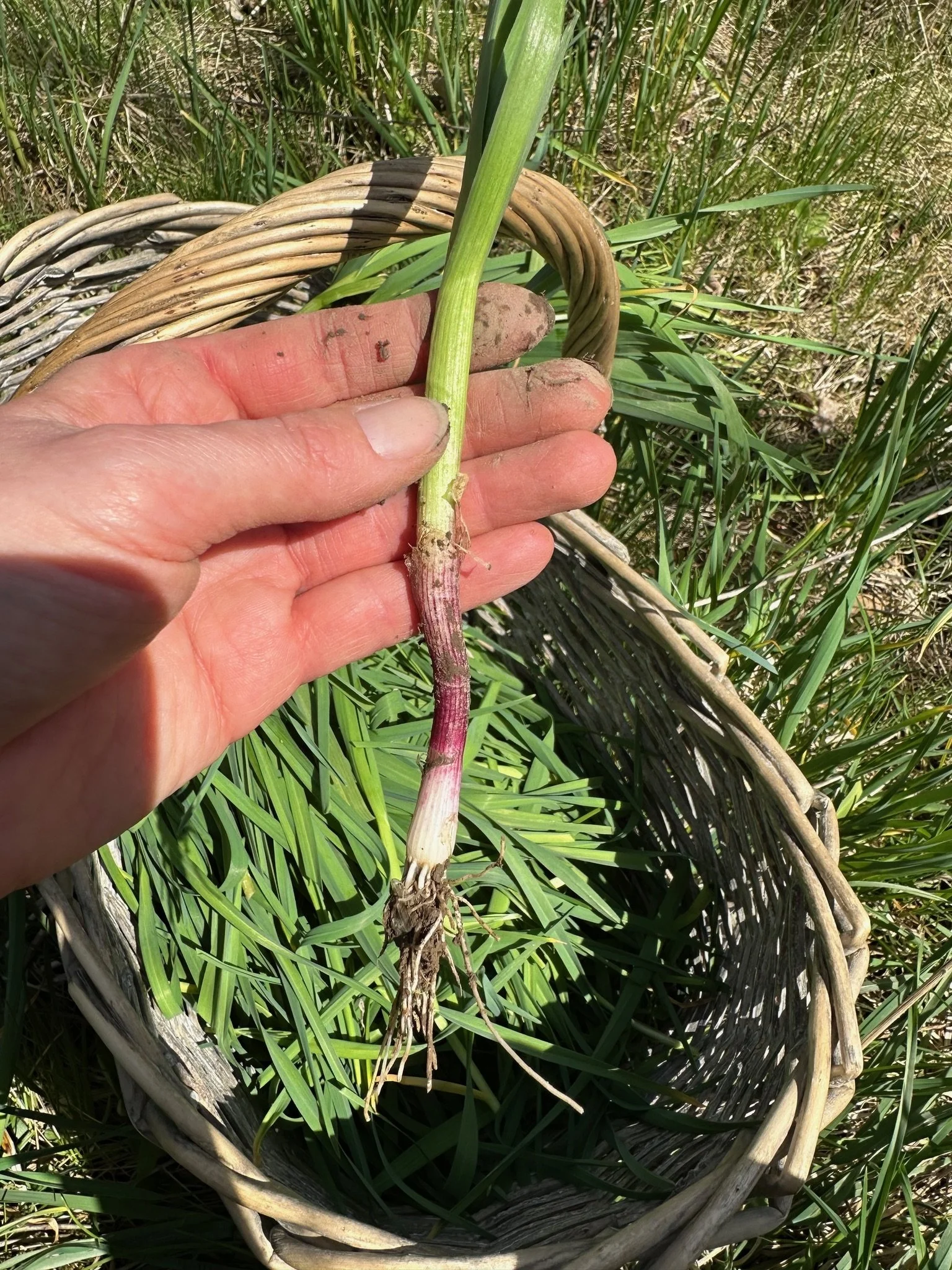Harvesting Wild Leek in Your Garden
If you’re fortunate enough to have wild leek thriving in your garden—or you’ve carefully cultivated your own ramp patch—you may be wondering how to harvest them properly. Since ramps are only around for a short window (typically mid-April to mid-May), making the most of their season while keeping your plants healthy is key.
A Note on Foraging We strongly discourage foraging in the wild, as it can have a devastating impact on fragile ecosystems and threaten plant populations. Instead, we advocate for cultivating native plants right in our own backyards—an approach that nurtures biodiversity, promotes sustainability, and helps protect these valuable species for future generations. Check our Edible Garden Post for further information.
1. Harvest Leaves Instead of Bulbs
One of the best ways to ensure your ramp patch remains productive year after year is to harvest only the leaves, leaving the bulbs and roots undisturbed. This allows the plant to continue growing, spreading seeds, and regenerating naturally.
To minimize impact:
Use scissors to snip a single leaf from each plant before moving to the next.
Avoid harvesting from young or small ramps—let them grow undisturbed until they reach maturity.
By leaving the bulbs intact, your patch will continue to produce fresh leaves season after season!
2. Take Only a Small Portion
Because ramps take several years to mature, it’s important to harvest sparingly so the plants have time to replenish. A good guideline is to pick no more than 10-15% of the total patch at a time.
Some ways to be mindful:
Harvest in a scattered pattern rather than taking from one concentrated area.
Leave larger clusters untouched so they can continue to spread naturally.
If your ramp patch is small, harvest even less to allow it to grow stronger over time.
3. Use Sharp Tools for Clean Cuts
A clean cut helps the plant recover more easily, reducing stress and improving regrowth. If you choose to take bulbs, use a sharp knife and cut just above the root, instead of pulling the plant out completely.
Why does this matter?
Minimizes soil disturbance, keeping the surrounding plants healthy.
Prevents damage to nearby bulbs, allowing the patch to thrive.
Encourages regeneration so new growth can emerge the following year.
4. Rotate Harvesting Locations
To keep your ramp patch flourishing, rotate where you harvest each season instead of picking from the same spot every year.
This ensures:
Plants get a chance to fully recover before the next growing season.
The ramp population remains strong and sustainable for future harvests.
Your patch will continue to expand, offering more ramps each spring!
5. Support Sustainable Cultivation
If you love ramps and want to ensure a steady supply, consider planting more in your own garden or supporting farmers who cultivate them sustainably.
Ways to help:
Grow ramps in shaded, moist soil to mimic their natural habitat.
Purchase from local farms that use ethical harvesting methods.
Share sustainable harvesting practices with others so ramps remain available for future generations.
Keeping Your Ramp Patch Healthy
To maintain a steady supply of wild leeks in your garden, rotate your harvesting spots each season so plants have time to recover. If you ever want to expand your patch, consider planting more ramps or supporting local farmers who cultivate them sustainably.
By following these simple harvesting practices, you’ll ensure your garden-grown wild leek continues to thrive—and you’ll always have fresh, flavourful ramps for your kitchen!
Disclaimer
Please exercise caution when identifying and consuming wild or homegrown native plants, as many species can be toxic or harmful if misidentified. While we strive to offer helpful information about edible gardening, we expect every reader to take full responsibility for conducting their own thorough research before consuming anything harvested. The nnative team is not to be held responsible for any harm that may result from gardening advice or the use of this information.




